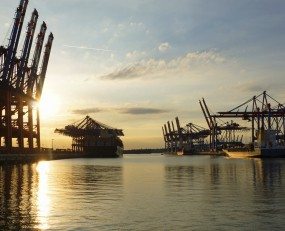
Issues with container placement, delayed voyages, port congestion – these are just a few challenges that ocean carriers frequently face, with shippers paying the price for the delays resulting from these challenges. As pertinent as these issues have been in the shipping industry, new predictive analytics platforms hold the potential for helping carriers avoid these delays and save money.
Predictive analytics is the use of data, statistical algorithms and machine learning techniques to identify the likelihood of future outcomes based on historical data. The goal is to go beyond knowing what has happened to providing a best assessment of what will happen in the future.
This type of analytics has been around for decades but as a discipline it has been considered rather exotic. However, it is a technology whose time has come as more and more organizations are turning to predictive analytics to increase competitive advantage and to enhance their value proposition, including logistics-related companies. The reason for the increased attention attached to predictive analytics in the logistics industry lies in the importance of predicting supply chain behaviour and events. To be at the top of the game in supply chain management it is crucial to make the process more accurate, reliable and at reduced cost – something that advanced predictive analytics could potentially achieve.
The application of predictive intelligence in the shipping industry has come one step closer to implementation with ClearMetal, a Silicon Valley start-up. In February 2016, ClearMetal, a predictive logistics company, announced the launch of its predictive intelligence platform built to solve key shipping industry problems. ClearMetal Predictive Intelligence Platform is expected to drive profitability by eliminating uncertainties and giving carriers accurate forecasts to optimize asset allocation, repositioning and utilization. The platform will aggregate data from a wide variety of sources including carrier operations as well as third-party data such as weather forecasts, labour issues, currency rates and economic changes. Real-time forecasts will be provided for up to eight weeks into the future which can give carriers the confidence for better decision making and let them prepare for potential issues before they happen.
The existing forecasting models are considered too static to be able to predict the variability inherent in the shipping industry as they look at overall averages, unlike predictive analytics which applies machine learning and data science techniques to forecast demand at a much more granular level. With the appropriate IT and data infrastructure now in place, the shipping industry is well positioned to increase the efficacy of collating information for the purpose of identifying trends and predicting events. With some estimates putting the costs associated with repositioning, excess storage, needless hauling and underutilized vessel space as high as $2bn annually, predictive analytics can indeed benefit the shipping industry which has been struggling with weak profitability for quite some time now.
Source: Transport Intelligence, January 18th, 2017
Author: Violeta Keckarovska